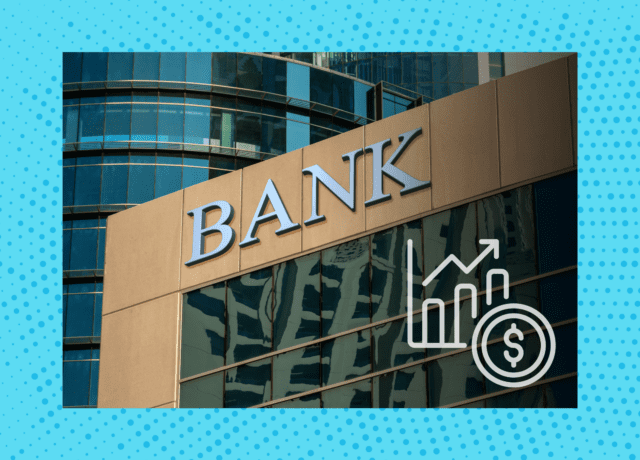The collapse of Silicon Valley Bank (SVB) has the financial universe floating without a tether; uncertainty continues to swell since the bank, beloved by many, including Roku, Buzzfeed, and Circle, went under on March 10.
Since that day, which marked the largest bank failure since Washington Mutual shuttered in 2008, the ripple effects have been intense.
One of the recent stamps on the timeline: First Republic Bank received a $30b lifeline from major U.S. banks, including JPMorgan Chase & Co. and Bank of America Corp.
Finance advertisers can’t look away, which begs the question: How will they spend for the rest of the year?
But before we look into our data-powered crystal ball, let’s take a step back and examine their strategies leading up to that fateful day in early March.

Finance Advertisers Don’t Fear the Recession
In 2022, 1.7k advertisers for financial institutions and services (accountants, banks, financial advisors, insurance providers, realtors, etc.) spent $5.3b, representing an 8% increase from 2021.
Nearly a third (31%) of that investment came in Q1 when budgets jumped by 17% YoY. Spending in Q2, Q3, and Q4 increased by 3%, 10%, and 1% YoY, respectively.
The modest overall increase came despite an overwhelming feeling of financial anxiety. According to a 2022 study, 65% of respondents cited money as a significant source of stress—and for a good reason.
The year was full of headlines about a recession, overpriced eggs, and rising interest rates that put house hunting on hold for many.
In particular, advertisers for banks and credit unions shrugged off the financial woes.
In 2022, over 850 banks and credit unions spent over $1b to promote their names and banking services, representing a 33% YoY increase from 2021.
These companies, including those providing the lifeline to SVB, contributed 20% of the ad investment from finance advertisers.
Big banks, bigger ad budgets
Through February 2023, advertisers for five banks—Bank of America, Capital One (Capital One Spark Business, etc.), Chime, Discover Bank, The Royal Bank of Scotland, and Citizens Bank—were responsible for 67% ($113mm) of the total investment from banks and credit unions.
Advertisers for Capital One were the only member of the quintet to reduce spending so far in 2023; the other four members increased theirs by at least 16% YoY.
That said, the two biggest jumps came from advertisers at Chime (up by 200%) and Citizens Bank.
What’s at the heart of Chime’s increase in ad spending?
It’s not what but who. Vineet Mehra.
Mehra, who was previously the chief growth and customer experience officer at Good Egg, said,
“This is not a turnaround. This is not a reset of everything. It’s about connecting the ingredients. My focus is taking something from great to even greater.”
For Mehra and marketing leaders at other “neobanks,” banks with no physical branches like Varo, Current, and Aspiration, big budgets are necessary to keep pace with traditional banks and gain market share in the growing digital banking world.
According to Insider Intelligence, the number of neobank account holders will grow by more than 46% between 2022 and 2026.
Through February 2023, Mehra moved almost all (97%) of the company’s budget to video ads across social, online video, OTT, and TV.
Meanwhile, Citizens Bank advertisers spent over 95% of their budget on broadcast networks like ABC, CBS, and Fox.
The polarizing allocation signals a battle between advertisers working for companies at opposite ends of their evolutions.
Chime, launched by Chris Britt and Ryan King in 2012, has its sights set on those making up digital-first generations with no qualms about bringing their finances online.
According to a survey by PYMNTS and Treasury Prime, 57% of millennials and bridge millennials (those born between 1980 and 1989) are drawn to digital banks.
Another study, which estimated 77.6% of millennials would use digital banking by 2022, makes an even stronger case for a future without neighborhood banks.
These everything-online generations warrant sizable investments in advertising ecosystems popular among younger crowds—think OTT and social media. As of February 2021, 84% of those aged 18-29 said they used at least one social media platform.
Meanwhile, around 75% of respondents aged 18 to 34 said they subscribed to Netflix, which recently introduced an ad-supported tier.
Meanwhile, Citizens Bank, which is approaching its 200th trip around the sun, is hanging its hat on ad ecosystems that historically skew toward older folks.
That approach likely changes as baby boomers embrace online banking, and legacy financial institutions, including Citizens Bank, reposition themselves accordingly.
For example, Citizens Bank recently announced the launch of Zelle® within their banking app to give eligible small business customers a way to send and receive money more easily.
Trouble Brewing
A bank run, decline in startup funding, and rising interest rates didn’t flip the financial sector on its head until March, but advertisers clutched their dollars far before that.
Through February 2023, more than 660 advertisers for banks and credit unions invested $169.3mm, representing a 22% drop from the more than $215mm they spent in the first two months of 2022. Spending in January and February decreased by 22% and 21% YoY, respectively.
Many advertisers have abandoned their strategies completely.
More than 540 banks (including commercial), credit unions, and banking services that bought ads in January and February 2022 haven’t done so this year.
Even the big spenders are pulling back.
The nearly 380 bank and credit union advertisers who spent through February 2022—and account for 98% of the investment this year—collectively decreased spending by 18% YoY.
So, what does the future hold for financial service and institution advertisers?
A whole lot of caution, which almost certainly means fewer ad dollars.
For more insights, sign up for MediaRadar’s blog here.



